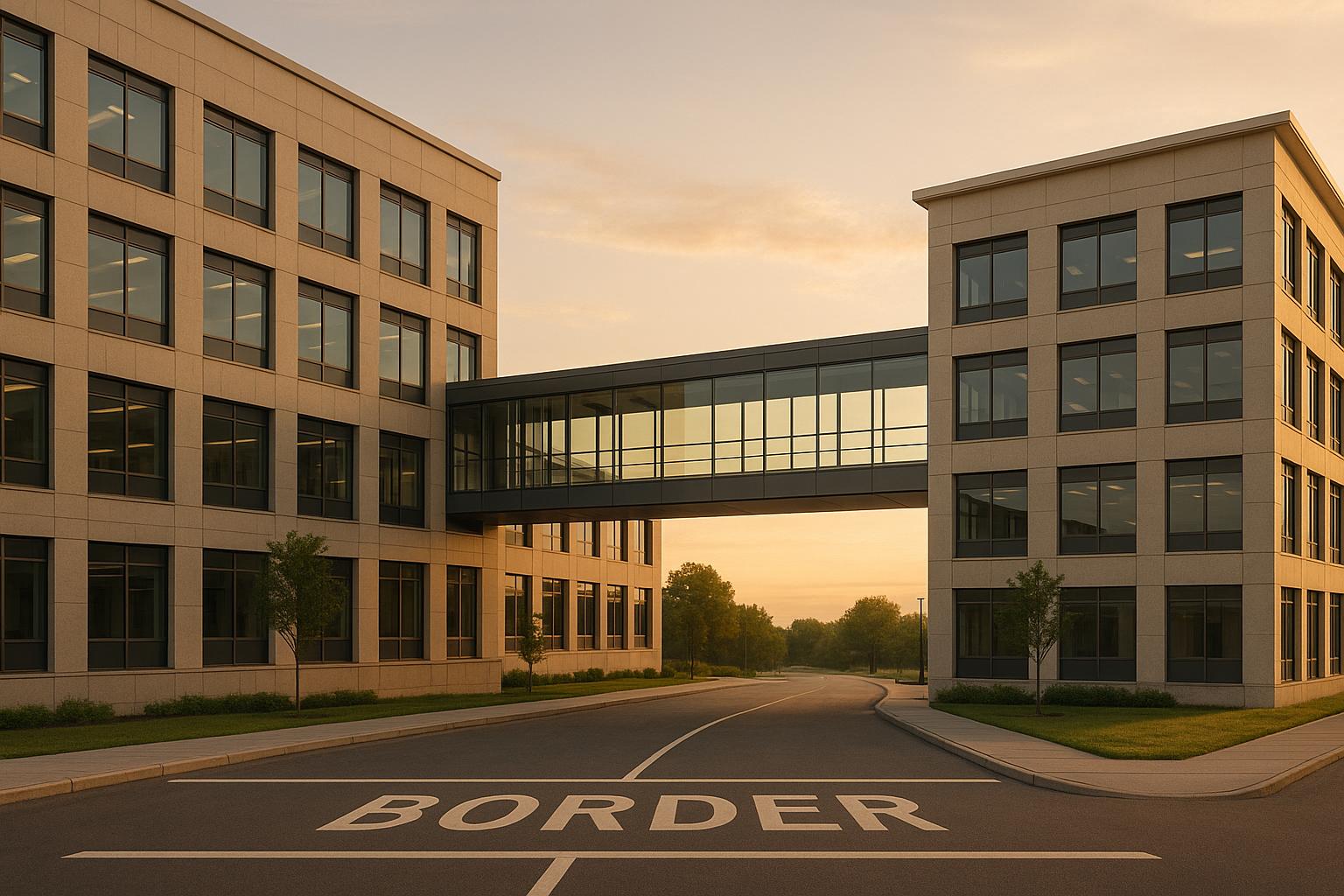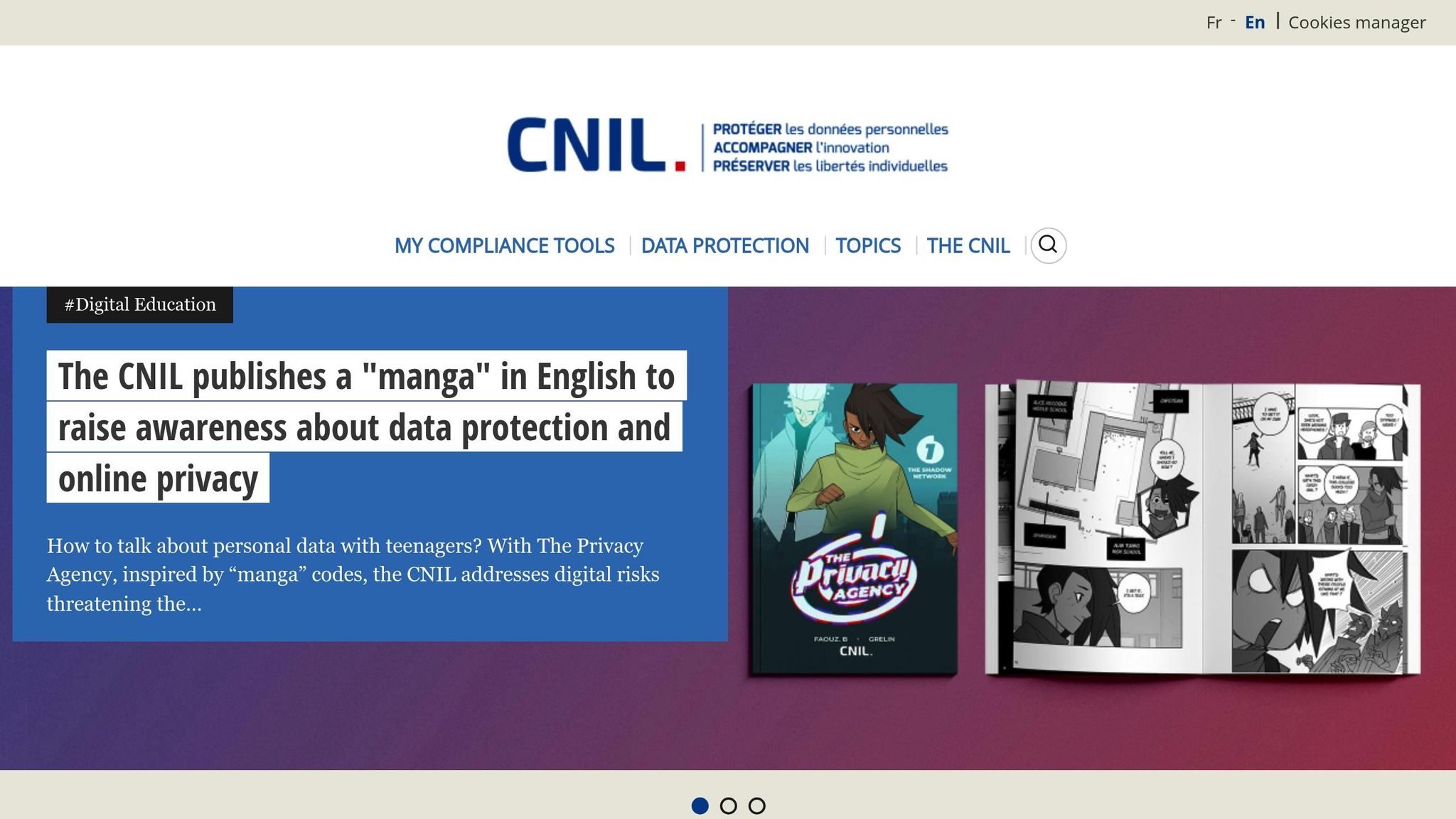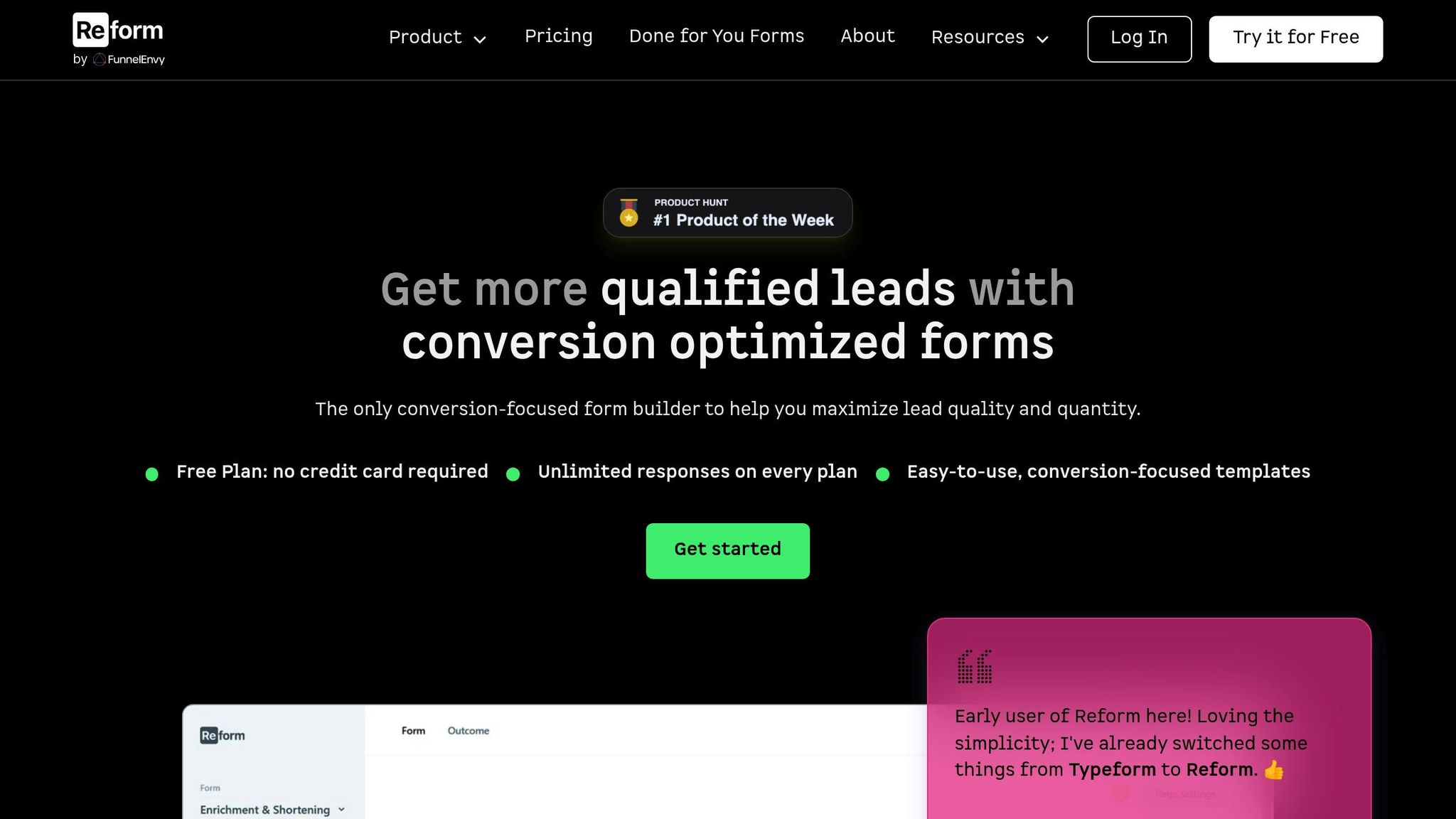Cross-Border GDPR Disputes: Authority Roundup

Cross-border GDPR disputes are a growing challenge for businesses and regulators in the EU. These disputes arise when data protection authorities (DPAs) from different countries interpret GDPR rules differently, leading to delays, inconsistent enforcement, and resource strain. While the GDPR's "one-stop-shop" mechanism was designed to simplify cross-border cases, it often falls short due to procedural differences and disagreements between authorities.
Key Issues:
- Inconsistent Enforcement: Member states interpret GDPR rules differently, such as on consent standards or breach reporting timelines.
- Delays in Resolution: Translation issues, resource shortages, and procedural differences slow investigations, sometimes lasting years.
- Impact on Businesses and Individuals: Companies face compliance uncertainty, while individuals experience long waits for complaint resolutions.
2025 Reforms Aim to Fix This:
- Unified Procedures: Standardized rules across all EU member states to reduce administrative inconsistencies.
- Fixed Deadlines: New deadlines for complex cases to prevent indefinite delays.
- Improved Collaboration: Joint investigations, shared resources, and better communication between DPAs.
For businesses, especially those using tools like lead generation forms, these changes could simplify compliance by reducing jurisdictional conflicts and ensuring more predictable enforcement. However, preparation is crucial - companies must update processes, train staff, and conduct regular audits to align with the upcoming reforms.
#PrivacyCamp23 - Saving GDPR enforcement thanks to procedural harmonisation: Great, but how exactly?
Main Problems in Cross-Border GDPR Dispute Resolution
Cross-border GDPR disputes often lead to lengthy delays and put significant strain on resources for both regulators and companies. Below are the key challenges that obstruct efficient resolution.
Different Rules Across Countries
Although the GDPR is designed to be a uniform regulation, its application is often disrupted by varying national laws. Administrative and procedural rules differ widely from one country to another, influencing aspects like time limits, participation rights, and how information is shared.
This lack of consistency becomes even more problematic when authorities clash over core GDPR concepts. For instance, some countries enforce stricter standards for consent, while others prioritize quicker data breach notifications. Such disparities can weaken enforcement consistency and make collaboration between national authorities more difficult.
The one-stop-shop mechanism, intended to simplify compliance, has introduced its own set of challenges. Lead supervisory authorities often hold an outsized influence over cases, sometimes delaying the sharing of critical information with other concerned authorities until investigations are well underway. These discrepancies add to delays, especially when combined with resource shortages, as discussed next.
Slow Processing and Limited Resources
Cross-border cases are slowed down by translation issues, procedural differences, and limited resources. Investigations, particularly those involving major technology companies, can drag on for years.
As of September 2023, 87% of cross-border complaints managed by Ireland's Data Protection Commission involved just ten data controllers - largely large tech firms headquartered in Dublin. This creates an uneven workload, where some authorities are overwhelmed while others handle relatively few cases.
To sidestep bureaucratic delays, some authorities resort to informal enforcement practices, bypassing formal cooperation mechanisms. While this may seem like a shortcut, it often excludes other concerned authorities and strengthens the lead authority’s dominant role. Additionally, these informal processes lack binding deadlines or enforceable outcomes, further complicating the system.
Effects on Companies and People
For companies, the fragmented frameworks mean juggling compliance requirements across multiple jurisdictions. This dual compliance burden not only complicates operations but also weakens overall data protection efforts and public confidence.
The European Data Protection Board (EDPB) also struggles under these inefficiencies. Its ability to resolve disputes is hampered when national authorities fail to share complete case files. Since the EDPB relies entirely on submissions from these authorities, incomplete or inconsistent information makes effective dispute resolution nearly impossible.
The delays affect individuals most directly. People filing complaints often face long waits for resolutions, leaving them in a state of uncertainty. These extended timelines erode trust in the system and highlight the challenges authorities face in resolving procedural disagreements.
Even proposed reforms bring their own complications. For example, a provisional agreement reached on June 16, 2025, introduces a 15-month deadline for complex cases. While this sets a clear timeline, implementing such changes will likely face significant hurdles. These ongoing inefficiencies emphasize the need for the procedural updates discussed in the next section.
2025 GDPR Procedural Changes
In 2025, the European Union plans to roll out updates to streamline how cross-border GDPR disputes are handled. These changes aim to tackle the delays and coordination challenges that have plagued enforcement efforts. By unifying procedures across member states and providing clearer investigative guidelines, the reforms promise a more efficient enforcement process. Let’s break down the three key aspects of these updates.
Unified Procedures Across Member States
The new framework will replace the patchwork of national practices with a single, standardized set of rules. This means all EU countries will follow the same protocols for sharing information, gathering evidence, and managing testimonies. With everyone on the same page, the delays caused by inconsistent administrative methods should finally be minimized.
Strict Deadlines for Complex Cases
To keep investigations moving, the reforms introduce fixed deadlines for handling complex cases. If these deadlines are missed, automatic escalation procedures and temporary protective measures will kick in. These interim actions are designed to safeguard data while investigations continue, ensuring that cases don’t stall indefinitely.
Stronger Collaboration Between Authorities
The updates will also boost cooperation among authorities. Joint investigation frameworks, shared resources, and coordinated interviews will become the norm. On top of that, improved digital case management and regular coordination meetings will help address resource gaps and ensure smoother communication across borders.
sbb-itb-5f36581
How Different Countries Handle Cross-Border GDPR Disputes
EU member states take different approaches to managing cross-border GDPR cases. These differences reflect their unique enforcement styles, organizational structures, and coordination methods. The variety in national strategies highlights the complexity of creating a unified approach to GDPR enforcement across Europe.
France's CNIL and Germany's BfDI Approaches

France’s CNIL operates as a centralized authority. This setup allows CNIL to respond quickly and enforce GDPR rules with rigor. It was one of the first regulators to issue major fines for transparency violations. CNIL also contributes to European Data Protection Board (EDPB) guidelines while maintaining its own frameworks tailored to French legal nuances. This dual role ensures compliance with EU standards while addressing national legal priorities.
Germany’s BfDI, on the other hand, functions within a decentralized system involving 16 state-level authorities. In cross-border cases, the BfDI represents Germany in the EDPB. However, reaching a unified German position requires coordination between federal and state authorities through the Single Contact Point (ZASt). This decentralized model illustrates the challenges of aligning GDPR enforcement across a federal system.
Spain and Other EU Models
Spain offers yet another perspective with its AEPD, which takes a proactive stance on enforcing cross-border data transfers. Across the EU, independent authorities bring their own resources and priorities to the table, leading to varied enforcement practices. While this diversity can spark innovative solutions, it also creates hurdles for multinational organizations trying to navigate compliance across different legal landscapes.
What This Means for Businesses Using Lead Generation Forms
The varied enforcement practices across the EU create a challenging compliance environment for businesses that rely on online lead generation forms. As data protection authorities enforce GDPR differently and the procedural changes set for 2025 draw closer, companies must adjust their practices to stay compliant. This evolving landscape requires careful planning and forward-thinking strategies to address the shifting regulations.
GDPR Compliance Challenges for Online Forms
For companies operating across multiple countries, ensuring GDPR compliance for lead generation forms can be a daunting task. The decentralized enforcement system means that a form meeting the standards in Germany might still encounter issues in France or Spain, where authorities may apply different criteria.
A key hurdle lies in establishing a lawful basis for data processing. Whether relying on legitimate interest, user consent, or contractual necessity, businesses must ensure these bases are clearly defined and compliant across all jurisdictions. For consent mechanisms, GDPR demands clarity and transparency - consent must be explicit, with users fully informed about how their data will be processed, how long it will be stored, and whether it will be shared with third parties. Pre-checked boxes or bundled consents for multiple purposes are not acceptable. Consent must be given freely and without ambiguity.
Data transfers outside the EU add another layer of complexity. To remain compliant, businesses must implement safeguards like Standard Contractual Clauses or ensure the receiving country provides adequate data protection measures.
How Reform Simplifies GDPR Compliance

Reform offers tools designed to make GDPR compliance more manageable while enhancing data protection efforts.
- Email validation: This feature ensures that only accurate and legitimate data is collected, reducing the risk of invalid or fraudulent submissions. It aligns with GDPR’s principle of data minimization by preventing unnecessary data collection.
- Conditional routing: This functionality tailors the form experience based on user responses, ensuring only relevant information is gathered. By avoiding excessive data collection, businesses stay aligned with GDPR’s requirements.
- Real-time analytics: Reform’s analytics dashboard provides insights into form performance, including completion rates and abandonment points. This transparency helps businesses spot compliance issues early and monitor data collection practices effectively.
- Spam prevention: By filtering out bot traffic and malicious submissions, Reform protects data quality and reduces the risk of processing fraudulent information, which could lead to compliance complications.
- Seamless integrations: Reform integrates with CRM and marketing tools, ensuring consistent data privacy controls across connected systems. Features like data mapping help maintain regulatory compliance throughout the entire workflow.
While these features provide valuable support, businesses must also focus on updating their internal processes to align with new regulatory requirements.
Getting Ready for New Regulations
With the 2025 standardized procedures on the horizon, businesses need to act quickly to prepare for the changes. These new rules will introduce consistent processes and set fixed deadlines for resolving cross-border cases, making preparation vital.
To get ready, companies should focus on three key areas:
- Documentation: Keep detailed records of data processing activities, including how forms are configured, how consent is obtained, and what retention policies are in place.
- Privacy impact assessments: Evaluate lead generation activities, especially those involving profiling or automated decision-making, to identify and address potential risks.
- Data subject rights procedures: Develop efficient processes for handling requests related to data access, deletion, and portability. The new standardized procedures will likely increase scrutiny of how promptly and effectively businesses respond to such requests.
It’s also crucial to provide updated GDPR training for employees who handle lead generation data. Marketing, sales, and customer service teams must understand the latest privacy requirements and know how to manage data responsibly.
Finally, schedule regular compliance audits - ideally every quarter - to ensure ongoing alignment with evolving regulations. These audits should cover form configurations, data processing activities, and privacy controls, keeping businesses ahead of potential compliance challenges.
Conclusion
The cross-border GDPR dispute resolution system is at a pivotal moment. Right now, differences in procedures among Data Protection Authorities are creating disruptions in GDPR enforcement. However, the standardized procedures set to roll out in 2025 aim to address these challenges by introducing consistent processes and fixed deadlines. These updates are expected to benefit both businesses and individuals, especially in areas like online lead generation.
For businesses relying on lead generation forms, these unified procedures will make compliance more straightforward by eliminating inconsistencies in enforcement practices. A harmonized approach to administrative processes - like determining complaint admissibility and respecting due process rights - will not only improve efficiency but also deliver better outcomes for businesses.
These reforms will also create a more predictable regulatory landscape. Companies will finally be able to adopt consistent compliance strategies across all EU markets, without needing to navigate varying interpretations of GDPR requirements in different countries. This shift will help reduce uncertainty and cut down on compliance costs.
Technological tools like email validation, conditional routing, and real-time analytics will play a key role in supporting GDPR compliance under these new standards. As enforcement becomes more uniform - and likely more rigorous - these tools will help businesses adapt more effectively, ensuring a smoother transition to the updated regulatory framework.
Ultimately, these changes mark a significant step forward in the evolution of European data protection laws. With streamlined cooperation among authorities and businesses adjusting their practices accordingly, the new procedures promise to reduce uncertainty and create clearer expectations. Companies that take steps now to align with these reforms will position themselves to thrive in a more predictable and efficient regulatory environment.
FAQs
What impact will the 2025 GDPR changes have on businesses operating across multiple EU countries?
The upcoming 2025 GDPR updates are set to make life a bit easier for businesses operating across multiple EU countries. The changes focus on creating a more uniform system for handling cross-border enforcement. Expect standardized complaint procedures, stricter timelines, and quicker, more transparent investigations. These updates are designed to cut down on delays and inconsistencies, giving businesses a clearer path to compliance.
For companies, this means better collaboration with data protection authorities and a smoother process for resolving disputes that cross borders. The goal? To simplify navigating GDPR rules while maintaining strong accountability throughout the EU.
What challenges do businesses face when complying with GDPR across different EU countries?
Businesses face significant hurdles due to inconsistent regulations and enforcement practices across EU member states. While GDPR sets a unified framework, individual countries often interpret and implement its rules differently. This creates obstacles for companies trying to establish consistent compliance strategies, especially when dealing with cross-border data transfers.
On top of that, jurisdictional conflicts and differences in national procedures add another layer of complexity. These discrepancies can cause delays, create legal uncertainty, and stretch out enforcement actions. In some instances, fines go unpaid, or enforcement remains uneven, further complicating the efforts of companies operating across multiple regions.
What steps can companies take to stay compliant with upcoming GDPR changes and avoid fines?
To prepare for the upcoming GDPR changes, businesses should begin by performing a thorough data audit. This helps pinpoint how personal data is being collected, stored, and processed. It's also crucial to update privacy policies to reflect any adjustments and ensure there’s a valid legal basis for processing data, whether that’s explicit consent or contractual requirements.
It may be wise to appoint a Data Protection Officer (DPO) and, if necessary, designate an EU representative to manage GDPR-related responsibilities. Regular training for employees on data protection practices can encourage a stronger compliance mindset across the organization. Staying up-to-date with regulatory changes and aligning with GDPR standards not only minimizes legal risks but also strengthens customer confidence.
Related Blog Posts
Get new content delivered straight to your inbox

The Response
Updates on the Reform platform, insights on optimizing conversion rates, and tips to craft forms that convert.
Drive real results with form optimizations
Tested across hundreds of experiments, our strategies deliver a 215% lift in qualified leads for B2B and SaaS companies.





